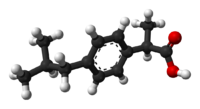
Photo from wikipedia
Importance Cardiovascular implanted electronic devices (CIEDs) are susceptible to electromagnetic interference. Dermatologists regularly use devices containing magnets, including dermatoscopes and their attachments, which could pose a hazard to patients with… Click to show full abstract
Importance Cardiovascular implanted electronic devices (CIEDs) are susceptible to electromagnetic interference. Dermatologists regularly use devices containing magnets, including dermatoscopes and their attachments, which could pose a hazard to patients with CIEDs. Objective To investigate the safety risk of magnets in dermatoscopes to patients with CIEDs. Design, Setting, and Participants This cross-sectional observational study was conducted between January 1, 2018, and March 31, 2018, in a controlled laboratory setting. Two experiments were performed. In the first experiment (performed in the Dermatology Service at Memorial Sloan Kettering Cancer Center, New York), dermatoscopes that contain magnets were obtained from 3 manufacturers. Using a magnometer, the magnetic field strength of the dermatoscopes was measured over the magnet; at the faceplate; and at a distance of 0.5 cm, 1 cm and 15 cm away from the faceplate. In the second experiment (performed in the University Heart Center Zurich, Zurich, Switzerland), ex vivo measurements were conducted to determine how the dermatoscopes affected old-generation and new generation CIEDs (pacemakers and implantable defibrillators). Main Outcomes and Measures Magnetic field strength as measured directly over the dermatoscope magnet; at the faceplate; and at distances of 0.5 cm, 1 cm, and 15 cm from the faceplate. Pacemaker and defibrillator operation when exposed to dermatoscopes. Results After conducting 24 measurements, the magnetic field (measured in gauss [G]) strength varied between 24.26 G and 163.04 G over the dermatoscope magnet, between 2.22 G and 9.98 G at the dermatoscope faceplate, between 0.82 G and 2.4 G at a distance of 0.5 cm, and between 0.5 G and 1.04 G at a distance of 1 cm; it was 0 for all devices at a 15 cm distance. The field strength at the faceplate was found to be generally below the CIED industry standard safety threshold. None of the dermatoscopes in the ex vivo experiment exerted any demonstrable disruptions or changes to the CIEDs. Conclusions and Relevance In real life, dermatoscope magnets likely present no measurable safety risk to patients with CIEDs. Using the polarized noncontact mode permits dermoscopy to be performed at least 0.5 cm from the skin surface, where the magnetic field strength was well below the 5-G safety threshold.
Journal Title: JAMA Dermatology
Year Published: 2018
Link to full text (if available)
Share on Social Media: Sign Up to like & get
recommendations!